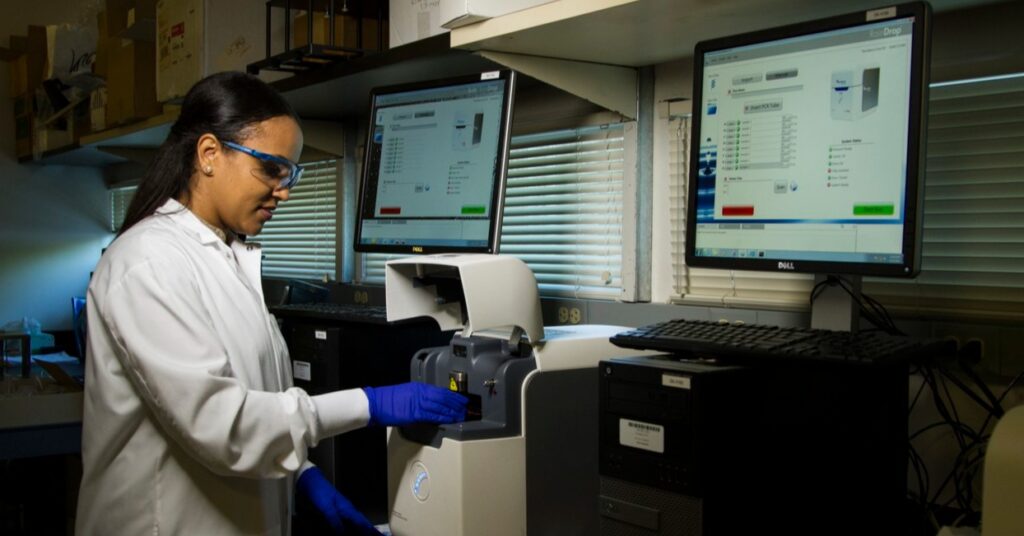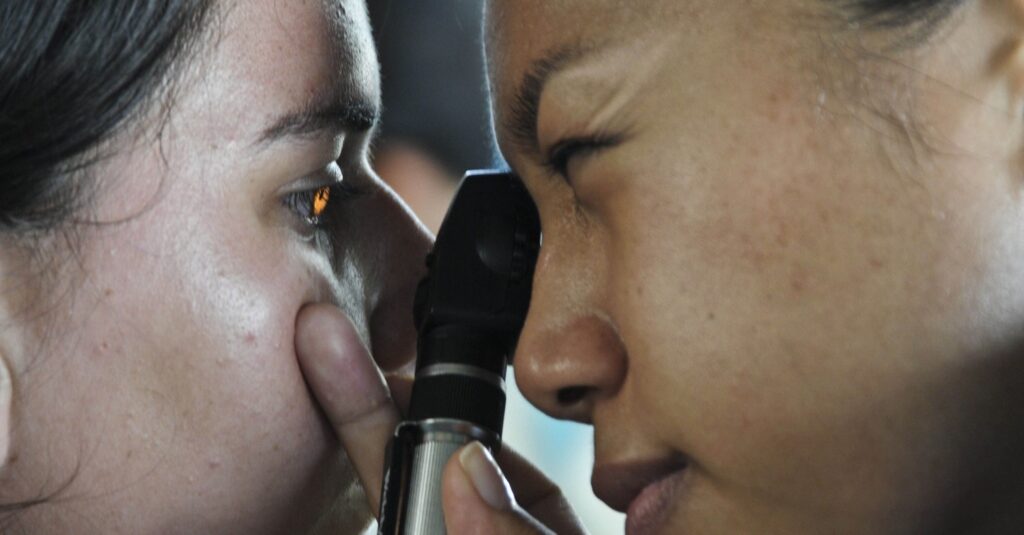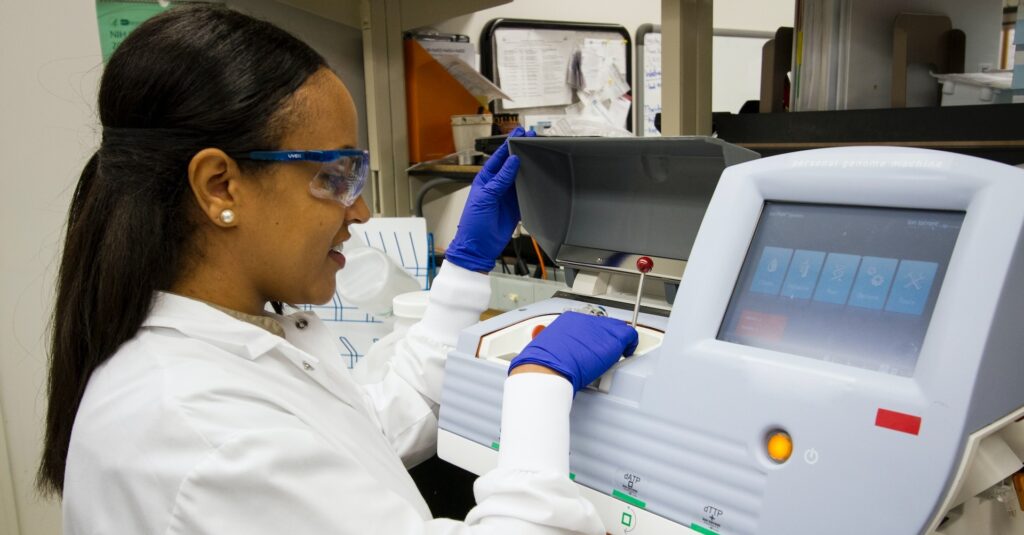
What Is the Epidemiological Triangle?
The epidemiological triad or triangle is an organized methodology used [...]

The most common eye problems in the United States involve refractive errors such as near-sightedness, farsightedness, astigmatism, and presbyopia. Optometrists—practitioners who hold a Doctor of Optometry degree and a state license—can repair most refractive errors through corrective lenses (eyeglasses and contact lenses) or by providing low-vision aids or vision therapy.
An annual visit to the optician screens for a lot more than 20/20 vision, however. In addition to vision screenings, doctors of optometry perform comprehensive eye exams that can assess overall eye health and detect serious health conditions that include hypertension, diabetes, cancer, and other autoimmune diseases.
And yet, according to the American Optometric Association (AOA), 25 percent of Americans believe they can forego an eye exam if their vision is clear. Furthermore, 52 percent of Americans are unaware that an eye disease diagnosis is part of a comprehensive eye exam. Those who skip their annual exam risk missing a critical opportunity to diagnose common ocular diseases and eye disorders that include:
The field of optometry plays an essential role in eye care and health care. An aging population should increase demand in this job field, which is projected to grow nine percent over the decade, according to the Bureau of Labor Statistics.
This article discusses the education requirements for optometrists and explores the following questions:
Optometrists specialize in eye and vision care by providing vision screenings and comprehensive eye exams. Doctors of optometry are considered physicians under Medicare but are not medical doctors. They are licensed to practice by their home states.
Optometrists examine, identify, and diagnose eye diseases or disorders through routine appointments. They also treat and manage vision impairments or ocular diseases through non-surgical treatments. Optometry offers numerous specializations, including pediatric optometry (working with infants and children) and low-vision rehabilitation (treating patients through non-optical or low-vision aids).
Many roles and responsibilities fall under optometry. Although specializations vary, general optometry duties include:
Optometric scope of practice varies by location. Some states allow optometrists to perform ophthalmic procedures related to removing foreign bodies from the eye, inject pharmaceutical agents to treat eye diseases, and prescribe controlled substances such as hydrocodone.
Optometry requires an extensive battery of soft and hard skills. Essential soft skills include:
Essential hard skills for optometrists, usually acquired through academic coursework, optometry school, or on-the-job experience, include:
Some employers require technology skills that include:
How do the roles of optician, optometrist, and ophthalmologist differ? While their job functions share some traits, many duties and responsibilities vastly differ. Their level of education and average salary wages also vary tremendously.
Opticians conduct fittings for eyeglasses or contact lenses based on the prescriptions provided by an optometrist or ophthalmologist. Opticians also help customers choose eyewear, educate them on proper eyewear care, and fulfill customer prescriptions and orders. According to the U.S. Bureau of Labor Statistics (BLS), opticians earn an annual salary of $37,570. Opticians typically receive on-the-job training and have a high school diploma or associate’s degree.
Optometrists deliver 85 percent of primary eye health and vision care, including most routine appointments. In addition to vision screenings, optometrists examine, treat, and diagnose common visual or eye disorders and can detect more serious problems that affect general health, such as diabetes, thyroid disease, and other conditions. Optometrists provide referrals to ophthalmologists for severe eye diseases requiring surgery or specialized treatment. Optometrists earn an average salary of $124,300 and typically need a Doctor of Optometry (O.D.) degree and a professional license to practice.
Ophthalmologists perform many of the same functions as optometrists. However, ophthalmologists can also address more advanced ocular diseases through prescribed medications and surgical procedures. Ophthalmologists, considered physicians and surgeons by the BLS, can bring in an annual income of more than $208,000. Ophthalmologists have extensive educational and clinical training, including a medical school degree and extended residency training.
Admission to optometry school is a competitive process that requires an entrance exam and a solid undergraduate GPA. Incoming students should have passing grades in undergraduate courses related to organic chemistry, biochemistry, microbiology, physics, anatomy, and other STEM courses. Pre-optometry students must also take an Optometry Admission Test (OAT) entrance exam that optometry programs use to assess potential candidates.
In addition to a bachelor’s degree, optometrists must also obtain a doctorate in optometry from a program accredited by the Accreditation Council on Optometric Education (ACOE). The doctorate takes an additional four years to earn. Finally, you will need a state license to practice.
Most optometrists typically have a bachelor’s degree in a scientific or pre-medical field to fulfill the prerequisite courses determined by the program.
All practicing optometrists must also have a Doctor of Optometry (O.D.) degree from an accredited optometry school. This four-year degree combines classroom instruction with supervised clinical experience.
To practice optometry, you must pass the National Board of Examiners in Optometry (NBEO) exam. The three-part comprehensive exam covers applied basic science, patient assessment and management, and clinical skills. In addition, the National Board administers specialized examinations for practitioners seeking to broaden their practice scope. State Board licensure varies, so optometrists should confirm the state requirements where they seek to practice.
After completing your doctorate and passing the exam, the learning doesn’t stop. Licenses are up for renewal every two years. You’ll need to stay apprised of the latest developments in your field to maintain your license.
Between undergraduate studies and obtaining your license in optometry, it can take roughly nine years to become an optometrist. As many optometry schools require undergraduate science-related coursework, fulfilling prerequisites can begin as early as your first year of college. Next, you’ll need to pass the Optometry Admission Test (OAT), which measures your knowledge of natural sciences and physics and assesses your reading comprehension and quantitative reasoning skills. Some programs accept alternative standardized tests such as the Graduate Record Exam (GRE).
Completing optometry school requires an additional four years of study and clinical training. Graduates can opt to complete a one-year residency upon graduation to pursue a specialized focus area such as ocular disease, pediatric optometry, or geriatric optometry.
Following your residency program, you’ll need to pass the National Board of Examiners in Optometry exam and acquire the proper licensure to practice in your state or region.
There are only 23 accredited colleges and schools of optometry in the United States, which accounts for the competitive admissions and selection process. None of the accredited optometry programs currently offer hybrid or online degree programs. The New England College of Optometry (NECO) seeks to become the first optometry school to offer a hybrid model; its program is slated to launch in the fall of 2023.
Optometrists must commit to lifelong learning. There are ample online opportunities to gain a general knowledge of optometry for those interested in the latest trends in the industry. Also, for practicing optometrists seeking timely, relevant content to learn advanced concepts, continuing education opportunities needed to renew your license are readily available online.
(Last Updated on February 26, 2024)
Questions or feedback? Email editor@noodle.com

The epidemiological triad or triangle is an organized methodology used [...]

A family nurse practitioner (FNP) provides comprehensive primary health care [...]

FNPs practice in a broad range of health care settings. [...]

Some epidemiologists assist pharmaceutical companies in developing safer medicines. Some [...]

Certifications certainly boost one's resume, demonstrating advanced proficiency in a [...]
Categorized as: Medicine, Optometry, Nursing & Healthcare